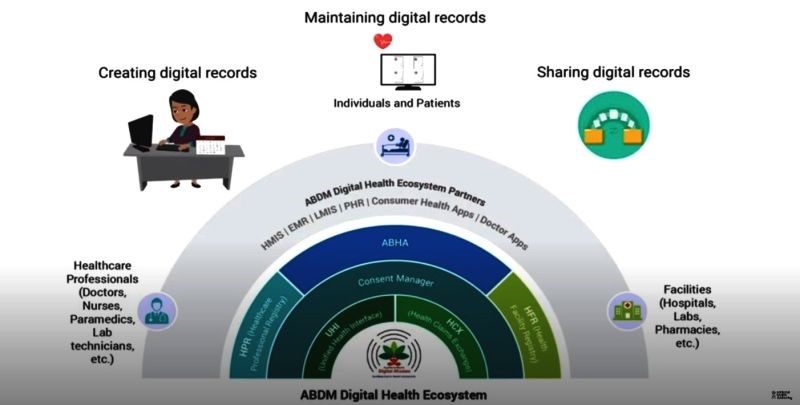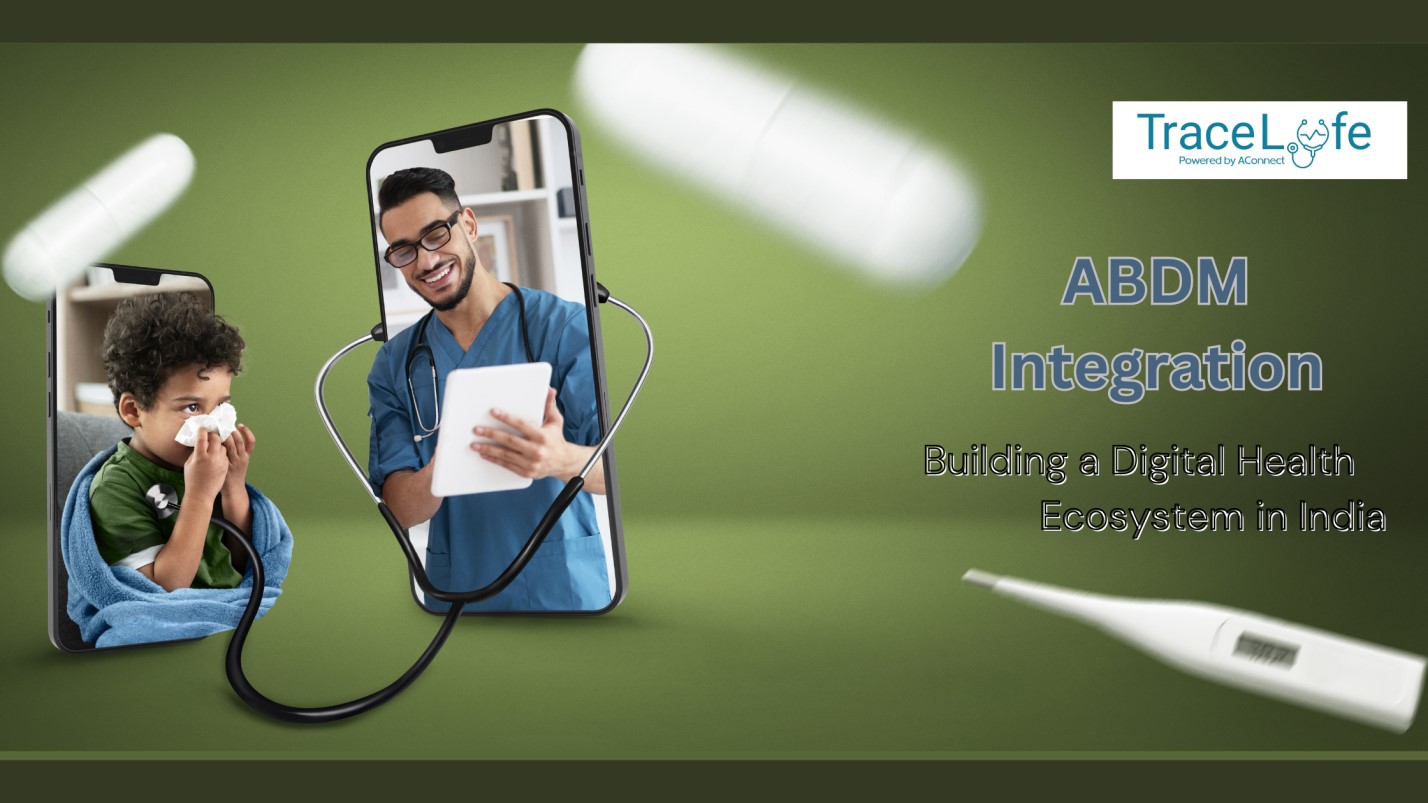The Ayushman Bharat Digital Mission offers a seamless digital healthcare experience for all stakeholders – health facilities, patients and healthcare workers. It was never so easy to track down the health profile of a patient before. ABDM Integrators /partners have developed several building blocks and APIs to make this task possible. A user can integrate those APIs into their inbuilt HMIS to access the benefits of the Ayushman Bharat mission.
Here is the step-by-step guidance on ABDM integration for the interested stakeholders.
- To get started with ABDM Integration Guidelines for ABDM-powered services like ABHA Number capture & verification, HIP services, and HIU application, you will need to use the testing environment known as the Sandbox. It is the place to experiment with different configurations and settings to ensure everything is as expected before deploying your service to the real world. It is necessary to follow the guidelines closely to ensure that your service is secure, reliable, and performs as expected.
- The next step is to explain how to exit the Sandbox and deploy the application in facilities irrespective of States and UTs.
In this article, we are going to discuss ABDM integration. For the sandbox exit, we will bring another write-up.

Let us understand how ABDM integration will help improve the patient experience.
By utilizing the ABDM infrastructure, healthcare providers can enhance the patient experience in several ways. For instance, integrating with ABDM can facilitate faster and more accurate diagnoses. Additionally, ABDM can help providers offer more personalized care by tracking patient data and providing insights into individual health needs. Ultimately, leveraging ABDM can help healthcare providers create a more seamless patient experience, improving overall satisfaction and outcomes.
Three milestones help during ABDM integration.
- Milestone 1: ABHA Number creation and capture & verification for seamless patient registration.
- Milestone 2: Building Health Information Provider (HIP) services to share digital records via Personal Health Records (ABHA) app.
- Milestone 3: Developing Health Information User (HIU) services to provide a view of patient’s medical history to authorized healthcare workers with complete consent.
Before discussing all the milestones, a healthcare service provider applies for the sandbox registration. Post internal approval, you will receive credentials to access ABDM APIs.

Now, let us study each milestone that is a part of ABDM integration.
Create ABHA Number:
- Register Partner facility (HIP) in ABDM Sandbox Health Facility Registry.
- Collaborate with HIP staff to provide patients with information regarding ABHA Numbers and ways to create them successfully.
- Develop workflows to capture and verify ABHA Numbers during registration, if provided by the patient.
- Link ABHA number with patient health information.
- Save the linking token at the time of ABHA Number capture and verification.
Share Consent via the ABHA Mobile Application
- Create a context list with the patient post-consultation/investigation.
- Integrate HIP services to respond against ABHA numbers, acknowledge consent requests of health data, etc.
- When the record is ready, share a notification with the patient to help access reports.
Share the Longitudinal History of a Patient with Healthcare Workers
- Create a consent request as an HIU and post it to the ABHA Mobile Application of the patient.
- Integrate services to receive medical data from the healthcare facilities linked to the patient’s ABHA Number.
- Organize medical data to share with consulting doctors/technicians on their allotted systems.
If you already have a digital HMIS for your healthcare facility, it is time to take the next step and become ABDM compliant. With the help of our Aconnect plugin, you can seamlessly integrate ABDM into your current HMIS setup. It will enhance patient health data management and monitoring, ensuring they receive the best possible care. However, if you are looking for a complete ABDM-compliant HMIS, TraceLyfe can guide you on your digital health monitoring journey. Let us help you take the next step towards improving patient outcomes and enhancing your healthcare facility experience.

